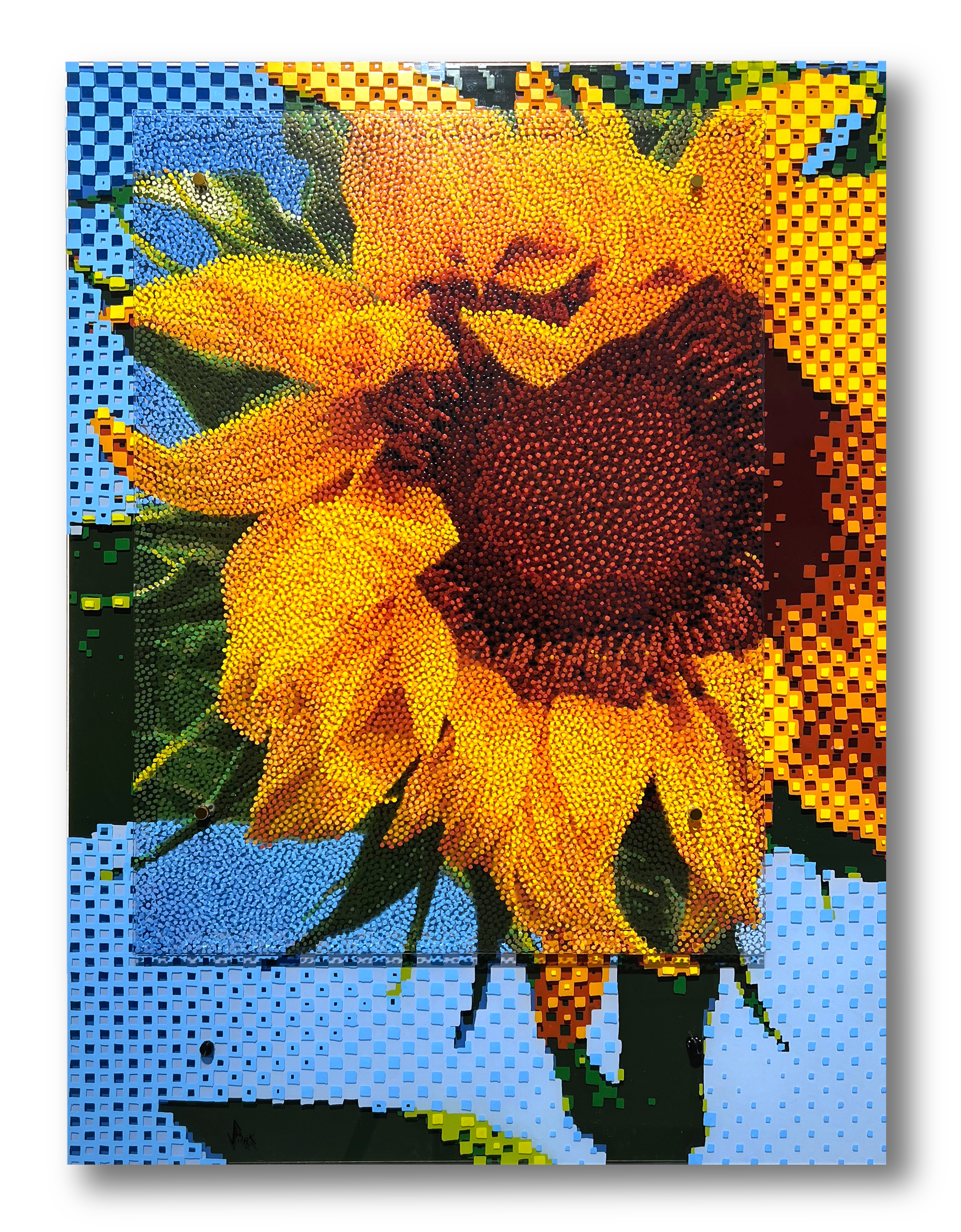





Acrylic paint on 2 sheets of 18"x24" plexiglass on top of 2 sheets of 24"x32" plexiglass. Date: June 2022.






Sunflowers have a rich and long history in the cultures of both the East and West. From the Incas using sunflowers to symbolize their Sun God. To the ancient Chinese believing sunflowers radiated powers of immortality. In almost every culture the sunflower represents loyalty, adoration, happiness, optimism, honesty, longevity, peace, admiration, and devotion. It universally has the power to bring joy to people.
Sunflowers are even tied to Greek Mythology with the story of the water nymph Clytie and her love of Apollo the sun god. You see, Clytie was so in love with Apollo that she would watch him with her adoring gaze each day as he moved from East to West across the sky. Apollo ignored Clytie and never returned her love.
The gods took pity on Clytie, and changed her into a sunflower. To this day you can watch as sunflowers turn their face towards the sun all day as Apollo the Sun God moves across the sky.
Some of the most famous paintings by Vincent van Gogh are his series of 7 sunflower still lifes painted between 1887-89 in Arles, in the south of France. Here are five of them.

Here is a painting by Paul Gauguin of Vincent van Gogh Painting Sunflowers in 1888.

The Pointillist painters of the 1880's were interested in using dots to visually mix colors. They used dots of different colors to simulate blended colors. For example, if dots of two colors are placed next to each other, from a distance they look like a third distinctive color. This Neo-Pointillist painting 'John Lennon' is my latest example of that Pointillist technique of mixing colors. This painting has around 20,000 dots!
You can learn more about my journey to Pointillism here.
